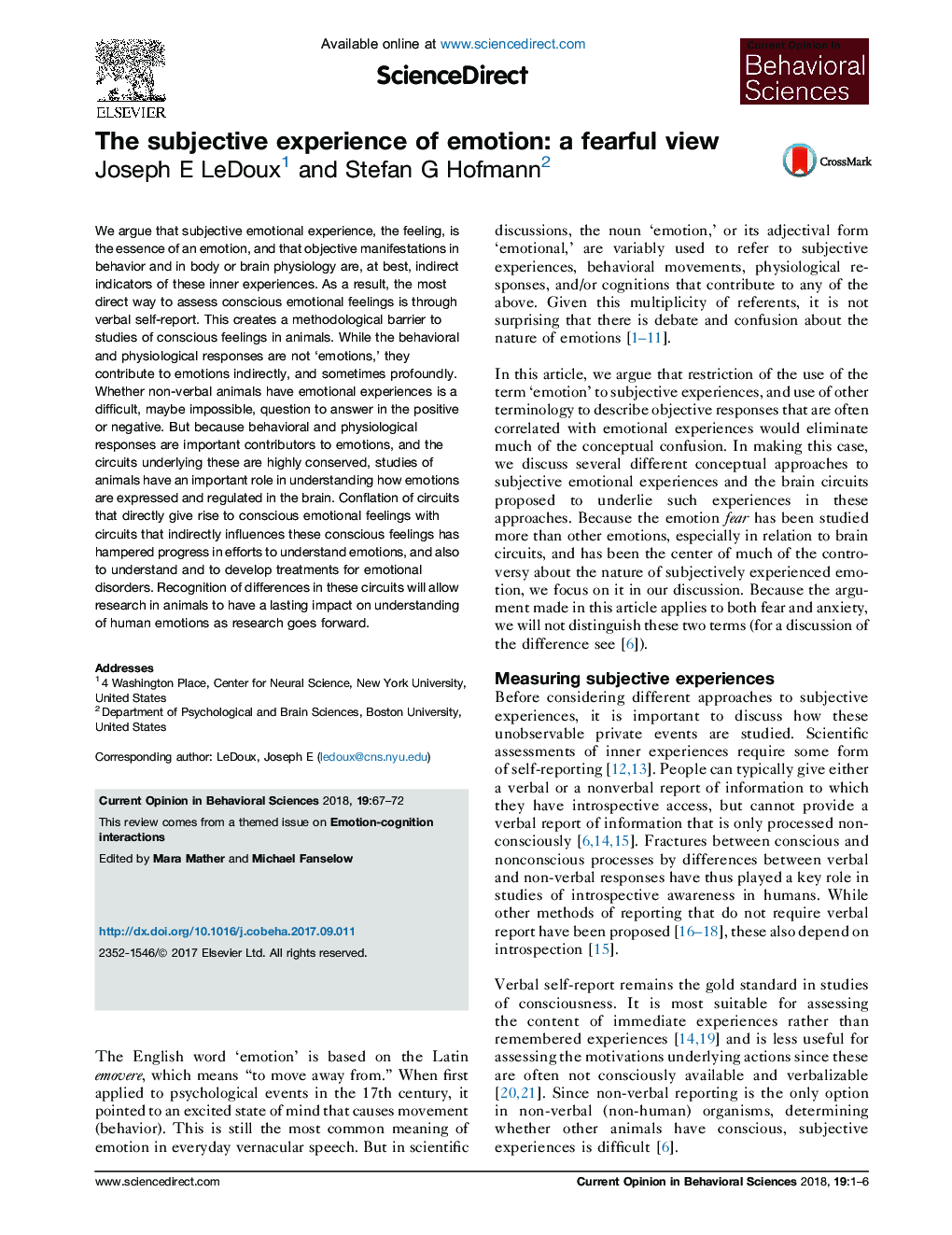| Article ID | Journal | Published Year | Pages | File Type |
|---|---|---|---|---|
| 8838177 | Current Opinion in Behavioral Sciences | 2018 | 6 Pages |
Abstract
We argue that subjective emotional experience, the feeling, is the essence of an emotion, and that objective manifestations in behavior and in body or brain physiology are, at best, indirect indicators of these inner experiences. As a result, the most direct way to assess conscious emotional feelings is through verbal self-report. This creates a methodological barrier to studies of conscious feelings in animals. While the behavioral and physiological responses are not 'emotions,' they contribute to emotions indirectly, and sometimes profoundly. Whether non-verbal animals have emotional experiences is a difficult, maybe impossible, question to answer in the positive or negative. But because behavioral and physiological responses are important contributors to emotions, and the circuits underlying these are highly conserved, studies of animals have an important role in understanding how emotions are expressed and regulated in the brain. Conflation of circuits that directly give rise to conscious emotional feelings with circuits that indirectly influences these conscious feelings has hampered progress in efforts to understand emotions, and also to understand and to develop treatments for emotional disorders. Recognition of differences in these circuits will allow research in animals to have a lasting impact on understanding of human emotions as research goes forward.
Related Topics
Life Sciences
Neuroscience
Behavioral Neuroscience
Authors
Joseph E LeDoux, Stefan G Hofmann,
